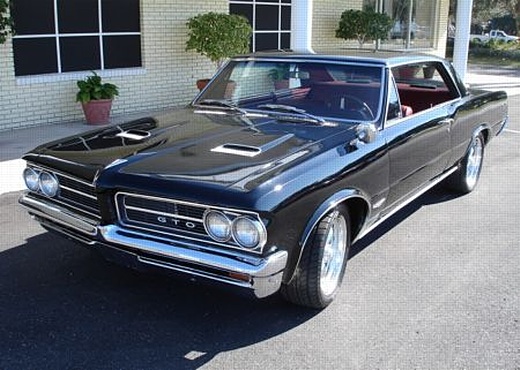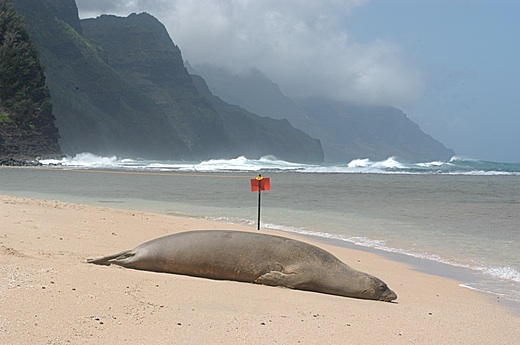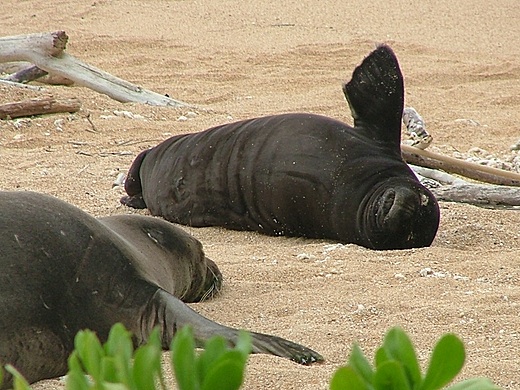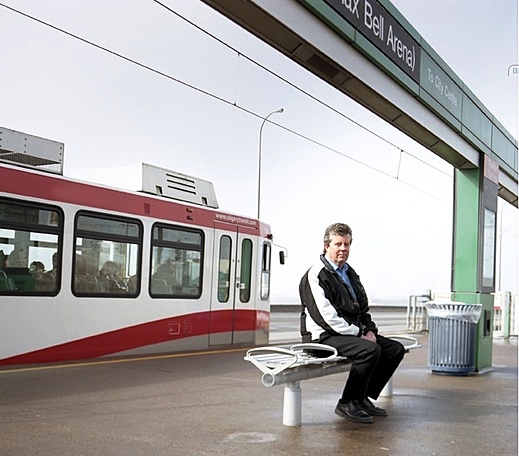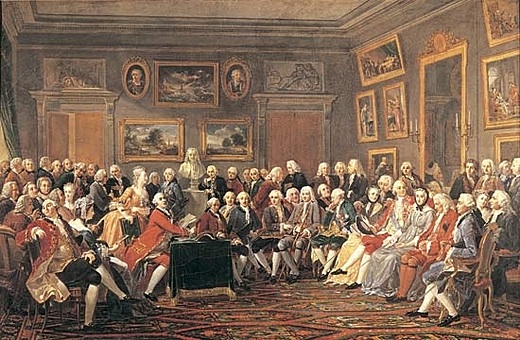SUBHEAD: Approaching a necessary transitional reality.
By Sharon Astyk on 29 May 2009 in Casaubon's Book
http://sharonastyk.com/2009/05/29/reinventing-the-informal-economy/#comments
 Image above: Flea Market in Englishtown, New Jersey. From http://www.flickr.com/photos/bobjagendorf/367400736/
Image above: Flea Market in Englishtown, New Jersey. From http://www.flickr.com/photos/bobjagendorf/367400736/
One of the most important things to know, I think, is that the growth we depend on (including the “green shoots” we might or might not be seeing) is always fed by taking something from somewhere else. That is, we tend to talk about growth as though it comes, magically, from nowhere - we all of a sudden wake up and realize we need VCRs and then, the VCR industry emerges, the economy grows, we move on to DVDs and Blu-ray or whatever, and on and on.
But this is not all the story. Many people who read this will be familiar with one part of the story that was left out - the energy equation.
That is, all growth depends on energy as a master resource, and the assumption that energy consumption can always grow, is, well, a problem. Those of you who are peak oil aware will have seen many versions of this account, revising the classic economic assumption that we’ll just find more energy when we need it.
But there’s another piece of the story that doesn’t get told quite as often - that energy is only part of the equation. In order to grow, we have to use a lot of energy, of course, but that energy use has never come without also bringing many more people into the economy as well - while energy does reduce human labor in some ways (ie, one guy can do with a tractor what 40 guys did with horses), the net demand for human labor in growing economies is always positive - you need more and more people.
More importantly, those people have to come from somewhere, and they have been doing things that also have economic value. Think of it as a law of conservation of human energies - that is, whenever you build a new industry and create growth, you take people who have been WORKING at something, contributing something, and you shift them from one sector of the economy to another.
I realize this sounds obvious, but our society works hard to convince us that that’s not true - that in fact, the people moved into the formal economy weren’t actually doing anything important.
Think about how much energy was devoted, say to talking about “unproductive” farms in the years of industrialization, or the amount of energy people have spent convincing us that cooking is “drudgery” and should be left the corporations - of course, Mom doesn’t need to spend time cooking, she can be an administrator for SuckItUp.com, because she can open a can, and that work is mindless, boring and pointless anyway.
Of course you can’t keep ‘em down on the farm after the war has taken them off to see Paree - what’s on the farm?
Because the US and other developed nations operate almost entirely in the formal economy, enormous efforts have been made, through industrialization and globalization to bring billions more people into the formal economy, where money is everything. The growth of the formal economy at the expense of the informal economy and the ecological economy has been the whole project of the last 70+ years.
Now, it is considered normal to need a lot of money for everything - everything from things once supplied by the commons (water, education in crappy school areas) to things once supplied by the infromal economy (cleaning, cooking, gardening, etc…).
And since we are presently in the middle of massive deflation - a contraction of the money supply - this is already a scary and troubling situation for many people.
I wrote in
"Depletion and Abundance" about the distinctions between the formal economy - the world of GDP statements, income taxes and salary and benefit equations, which constitutes about 1/4 of the world’s total economic activity; and the larger (although this comes as a surprise to most Americans, who live entirely in the formal economy and are often barely aware that the informal economy exists, much less vastly exceeds the value of the formal economy), which covers subsistence and domestic economies, criminal activities, under the table work, etc…
One of the effects of the last 70 years or so of industrialization is to pull everyone available into the formal economy. First came the farmers, black and white, many of whom did most of their work in the subsistence economy, often needing very little income.
The Depression/Dust Bowl pushed many of them off their land, and World War II took them away from home, and they never went back to the farm. Whole families were moved to the cities, to serve the war effort, and their land was left behind. After the war, the future was in the suburbs, the factories, the new, more formal economy.
Next came the women of the Global North. We tend to think of this as a product of the women’s movement, a conscious choice by a generation of women to move into the formal economy, away from the drudgery of domestic, informal economy life.
And there’s a degree to which that’s true. But the story is more complex than that. First of all, women first went into the workforce during the war, and despite our vision of the 1950s housewife at home, in fact, women continued to work in rising numbers after the war years.
Quite a few women never left the workforce, and still more entered the formal economy during the 1950s.
Both my husband and I had four grandmothers who worked in the 1950s and early 1960s, not because of the women’s movement, but because of their class and circumstances - two were single mothers, one divorced, one widowed, both worked at the phone company as operators. One was a recent immigrant whose household needed both incomes - she sold Fuller Brushes door to door. Another went to work in a department store to pay for college for her daughters.
Rather than viewing feminism as creating a radical break between a past in which women mostly did not work, we can see the war and the subsequent shift of laborers from the subsistence economy as a gradual progression that served to expand the formal economy, at the cost of the labor that sustained the informal one (it is worth noting that almost all “commons” are in some large measure sustained by informal economy work - volunteer efforts, for the most part, and that this was part of the destruction of the commons.)
I have argued before, and continue to argue that while the project of feminism itself is a good one, the version of feminism that succeeded and prospered was the one that served the larger goal of stripping the informal economy and the commons to feed the formal one - it was coopted from an early stage.
While many feminists critqued the popular version of feminism we got, it is no accident that corporations were happy to describe domestic work as mindless drudgery, unworthy of women, even before they moved en masse into the workforce - it is no accident that Betty Friedan and Campbell’s Soup were working towads the same goals.
The same can and should be said of many of the liberation movements of the period and since - this is not a maligning of the importance of the civil rights movement - the early civil rights movement focused on access to the commons - to the public square. This is why water fountains, buses, schools and lunch counters were so important. But the later versions of the civil rights movement have emphasized not the strengthening of the commons, or investment in the many African Americans who did subsistence and informal economy work on small farms or in local economies, but in the idea that freedom and justice are tied to greater access to corporate and factory jobs and the formal economy.
Everything, in the end, is coopted by the need for growth - and growth in one part of the economy is never natural - it is stripped from ecological capital and the informal economy.
That is, we do not grow, in the sense we mean - we reallocated resources from one sector to another.
In the 1990s, about as many American women were moved into the formal economy as were going to go - it has hovered around 60% for years, and this is probably something of a cap, because the minimal informal economy work never went away - while much of the work was stripped off, outsourced into the formal economy (ie, shifted from people cleaning their own toilets to hiring poorer people to do it), or simply no longer done by Americans (either it was offshored or abandoned), the reality is that someone still had to nurse the kids, do the laundry, maintain minimal civic culture, etc…
So the formal economy needed more natural resources, but since natural resource can never be separated from the people needed to use them, also more people moved from other sectors of the economy into the formal one.
The next step was globalization, the modern step-sister of colonialism. In it, millions and millions of agrarian people were moved into cities, and set to doing industrial labor. Where once they grew food, and after meeting most subsistence needs, they sold their surplus, now they work for a living and move into the money economy - which is great, as long as they’ve got money.
The problem is that rising food and energy costs (which remain high, despite deflation), and falling incomes make them vulnerable. And they make us just as vulnerable. During the last great economic crisis, more than 1/4 of the population lived in large part in the informal economy.
Now, it is a minute portion of US workers - it was once possible for families in the Depression to go home to the family farm, and at least eat, even if they had little else. It was once possible for urban communities that relied on informal sector labor to support themselves minimally in some ways. It was once possible for most people to rely on the commons to provide for some needs. Most of those resources have been stripped away.
The single most significant project of the next few decades will not be dealing with “peak oil” or “climate change” or “financial crisis” - or rather, it will be all of them. Instead, it will be rebuilding the informal economies. In difficult times, the role of the informal economy cannot be overstated - for example, economists all over the world couldn’t figure out what the Russians weren’t starving en masse during the collapse of the Soviet Union - the reason is that the informal economy, as Peasant economist Teodor Shanin and others have documented, arose to take the place of the formal economy.
Now the informal economy isn’t perfect. Unless you join the criminal parts of it, or are a natural scrounger, you probably won’t get rich off of it.
But the truth is that the informal economy is more resilient (being vastly larger) than the formal economy - markets, as we all know, long preceeded “the market.” That is, human beings always have economies - they are simply not always formal. In most cases, people live partly in one, partly in the other - the formal economy is needed for the paying taxes and debts, for some projects, while the informal economy meets other needs.
The more cash money you have, the less you may rely on the personal ties and subsistence labor of the informal economy, but also, the more unstable, complex and vulnerable the formal economy is (and these are the defining characteristics of modern finance), the more the informal economy is necessary - family ties take over for retirement accounts, barter when neither of you has any cash, subsistence labor replaces money labor for some people, so that you need to earn less.
I do not believe that the formal economy will disappear - but we are facing falling incomes, increasing insecurity and instability, and more and more of our formal economy incomes being used to serve enormous, and unsustainable debts.
We already know that Medicare is going broke, that workers are facing high tax burdens, and uncertain futures - this is a long term problem, whether there are green shoots or not. And most of us are vastly overreliant on the formal economy.
Which means that we must rebuild the commons, and the informal economy - and that means reallocating time and resources and labor away from the formal economy - the law of conservation here requires that just as we have rapidly taken our commons and informal economy labor and placed it in the service of economic growth, we must equally rapidly begin shifting our resources to the informal economy - we need to spend more time volunteering, we need to return to domestic labor that saves us money, like gardening, mending, making things.
We need cottage industries that can operate under the table, if necessary, and barter. We must take things away from the formal economy to build new commons - new water resources, new food resources, new community resources.
Mostly, what we need to take is our time and labor - because we can’t do it all, to the extent we can, we need to use the destruction of the formal economy to make new and better work for ourselves in the informal economy.
Don’t think that I believe this is easy - your mortgage lender won’t take chickens, and most of us can’t pay for our day to day life without formal economy work.
Which is why what we’re doing now is so very hard - most of us are trying to fit our gardening and canning and other work around our jobs, and our other projects. We’re stuck in the formal economy, unless it casts us out. But that is, I think a necessary transitional reality - again, don’t think I think it is easy, don’t think I think you aren’t tired - me too. But the truth is that if we are going to rebuild public, communal, domestic and informal economies, that time and energy will have to come from where we can spare it best - and we’re going to have to push ourselves.
For some of us, time will be forthcoming when lose our jobs, or when we get enough benefit from our activities to be able to take one earner out of the equation, or when we consolidate households and resources to need fewer earners.
But in a world without growth - and whether growth ends now or as we come up to absolute limits of natural resources, it is ending - we have no choice but to rebuild the informal economy.


